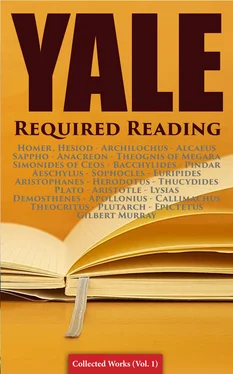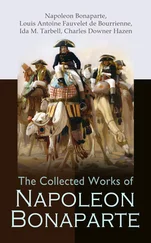Conceptions originally “half-conscious,” and purely popular, as of a Spirit of Vegetation, incarnate, as it were, in each year’s growth, were next handled by conscious poets, like the author of our Hymn, and then are “realised as abstract symbols, because intensely characteristic examples of moral, or spiritual conditions.” 72Thus Demeter and Persephone, no longer pigs or Grain-Mothers, “lend themselves to the elevation and the correction of the sentiments of sorrow and awe, by the presentment to the senses and imagination of an ideal expression of them. Demeter cannot but seem the type of divine grief. Persephone is the Goddess of Death, yet with a promise of life to come.”
That the Eleusinia included an ethical element seems undeniable. This one would think probable, a priori , on the ground that Greek Mysteries are an embellished survival of the initiatory rites of savages, which do contain elements of morality. This I have argued at some length in “Myth, Ritual, and Religion.” Many strange customs in some Greek Mysteries, such as the daubing of the initiate with clay, the use of the ρομβος (the Australian Tundun , a small piece of wood whirled noisily by a string), the general suggestion of a new life , the flogging of boys at Sparta, their retreat, each with his instructor (Australian kabbo , Greek εισπνηλος) to the forests, are precisely analogous to things found in Australia, America, and Africa. Now savage rites are often associated with what we think gross cruelty, and, as in Fiji, with abandoned license, of which the Fathers also accuse the Greeks. But, among the Yao of Central Africa, the initiator, observes Mr. Macdonald, “is said to give much good advice. His lectures condemn selfishness, and a selfish person is called mwisichana , that is, ‘uninitiated.’” 74a
Among the Australians, Dampier, in 1688, observed the singular unselfish generosity of distribution of food to the old, the weak, and the sick. According to Mr. Howitt, the boys of the Coast Murring tribe are taught in the Mysteries “to speak the straightforward truth while being initiated, and are warned to avoid various offences against propriety and morality.” The method of instruction is bad, a pantomimic representation of the sin to be avoided, but the intention is excellent. 74bAmong the Kurnai respect for the old, for unprotected women, the duty of unselfishness, and other ethical ideas are inculcated, 74cwhile certain food taboos prevail during the rite, as was also the case in the Eleusinia. That this moral idea of “sharing what they have with their friends” is not confined merely to the tribe, is proved by the experience of John Finnegan, a white man lost near Moreton Bay early in this century. “At all times, whether they had much or little, fish or kangaroo, they always gave me as much as I could eat.” Even when the whites stole the fish of the natives, and were detected, “instead of attempting to repossess themselves of the fish, they instantly set at work to procure more for us, and one or two fetched us as much dingowa as they could carry.” 75The first English settlers in Virginia, on the other hand, when some native stole a cup, burned down the whole town.
Thus the morality of the savage is not merely tribal (as is often alleged), and is carried into practice, as well as inculcated, in some regions, not in all, during the Mysteries.
For these reasons, if the Greek Mysteries be survivals of savage ceremonies (as there is no reason to doubt that they are), the savage association of moral instruction with mummeries might survive as easily as anything else. That it did survive is plain from numerous passages in classical authors. 76aThe initiate “live a pious life in regard to strangers and citizens.” They are to be “conscious of no evil”: they are to “protect such as have wrought no unrighteousness.” Such precepts “have their root in the ethico-religious consciousness.” 76bIt is not mere ritual purity that the Mysteries demand, either among naked Australians, or Yao, or in Greece. Lobeck did his best to minimise the testimony to the higher element in the Eleusinia, but without avail. The study of early, barbaric, savage, classical, Egyptian, or Indian religions should not be one-sided. Men have always been men, for good as well as for evil; and religion, almost everywhere, is allied with ethics no less than it is overrun by the parasite of myth, and the survival of magic in ritual. The Mother and the Maid were “Saviours” (Κορη Σωτειρα), “holy” and “pure,” despite contradictory legends. 77The tales of incest, as between Zeus and Persephone, are the result of the genealogical mania. The Gods were grouped in family-relationships, to account for their companionship in ritual, and each birth postulated an amour. None the less the same deities offered “salvation,” of a sort, and were patrons of conduct.
Greek religion was thus not destitute of certain chief elements in our own. But these were held in solution, with a host of other warring elements, lustful, cruel, or buffooning. These elements Greece was powerless to shake off; philosophers, by various expedients, might explain away the contradictory myths which overgrew the religion, but ritual, the luck of the State, and popular credulity, were tenacious of the whole strange mingling of beliefs and practices.
* * * * *
The view taken of the Eleusinia in this note is hardly so exalted as that of Dr. Hatch. “The main underlying conception of initiation was that there were elements in human life from which the candidate must purify himself before he could be fit to approach God.” The need of purification, ritual and moral, is certain, but one is not aware of anything in the purely popular or priestly religion of Greece which exactly answers to our word “God” as used in the passage cited. Individuals, by dint of piety or of speculation, might approach the conception, and probably many did, both in and out of the philosophic schools. But traditional ritual and myth could scarcely rise to this ideal; and it seems exaggerated to say of the crowded Eleusinian throng of pilgrims that “the race of mankind was lifted on to a higher plane when it came to be taught that only the pure in heart can see God.” 78The black native boys in Australia pass through a purgative ceremony to cure them of selfishness, and afterwards the initiator points to the blue vault of sky, bidding them behold “Our Father, Mungan-ngaur.” This is very well meant, and very creditable to untutored savages: and creditable ideas were not absent from the Eleusinia. But when we use the quotation, “Blessed are the pure in heart, for they shall see God,” our meaning, though not very definite, is a meaning which it would be hazardous to attribute to a black boy,—or to Sophocles. The idea of the New Life appears to occur in Australian Mysteries: a tribesman is buried, and rises at a given signal. But here the New Life is rather that of the lad admitted to full tribal privileges (including moral precepts) than that of a converted character. Confirmation, rather than conversion, is the analogy. The number of those analogies of ancient and savage with Christian religion is remarkable. But even in Greek Mysteries the conceptions are necessarily not so purely spiritual as in the Christian creed, of which they seem half-conscious and fragmentary anticipations. Or we may regard them as suggestions, which Christianity selected, accepted, and purified.
Table of Contents
THE ALLEGED EGYPTIAN ORIGINS
Table of Contents
In what has been said as to the Greek Mysteries, I have regarded them as of native origin. I have exhibited rites of analogous kinds in the germ, as it were, among savage and barbaric communities. In Peru, under the Incas, we actually find Mama and Cora (Demeter and Korê) as Goddesses of the maize (Acosta), and for rites of sympathetic magic connected with the production of fertile harvests (as in the Thesmophoria at Athens) it is enough to refer to the vast collection in Mr. Frazer’s “Golden Bough.” I have also indicated the closest of all known parallels to the Eleusinian in a medicine-dance and legend of the Pawnees. For other savage Mysteries in which a moral element occurs, I have quoted Australian and African examples. Thence I have inferred that the early Greeks might, and probably did, evolve their multiform mystic rites out of germs of such things inherited from their own prehistoric ancestors. No process, on the other hand, of borrowing from Greece can conceivably account for the Pawnee and Peruvian rites, so closely analogous to those of Hellas. Therefore I see no reason why, if Egypt, for instance, presents parallels to the Eleusinia, we should suppose that the prehistoric Greeks borrowed the Eleusinia from Egypt. These things can grow up, autochthonous and underived, out of the soil of human nature anywhere, granting certain social conditions. Monsieur Foucart, however, has lately argued in favour of an Egyptian origin of the Eleusinia. 82
Читать дальше












